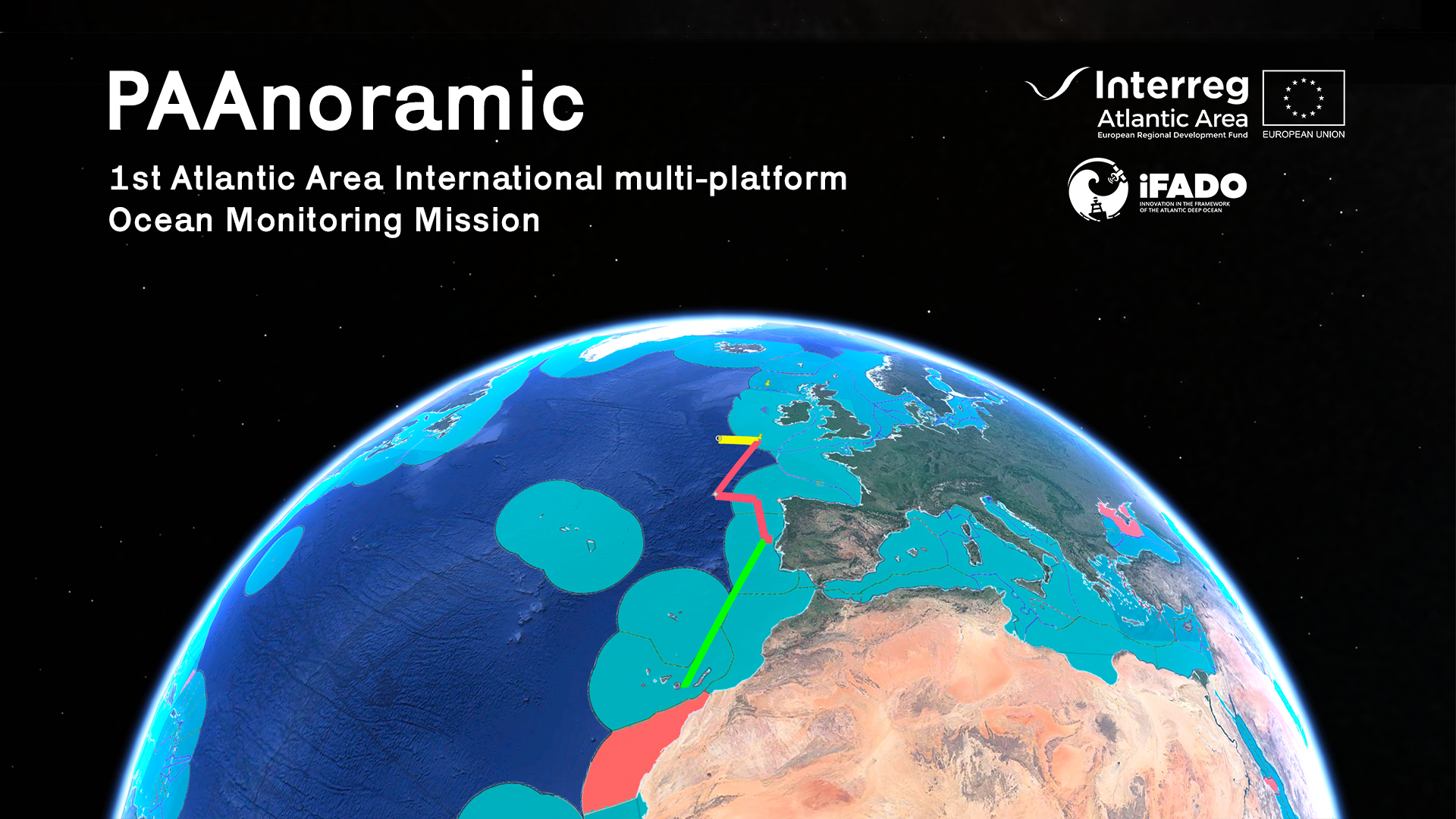IFADO project
IFADO, an INTERREG Atlantic Area project, aims to perform the 1st European Atlantic Area multiplatform Ocean Monitoring Mission PAAnoramic.
The international mission will deploy in 2022 autonomous vehicles that will, for the first time, cover the entire Atlantic Arc from Irish waters to the Canary Islands. The mission will be supported along its course with in-situ monitoring campaigns, remote sensing and numerical modelling.
The mission will extend to the Atlantic Area, the annual glider endurance line between mainland Portugal and the Canary Islands (Spain), established during the iFADO project in 2018. This ambitious action will set a milestone for a future Atlantic Area international unmanned monitoring strategy. To disseminate adequately the PAAnoramic preparation, progress and outcomes a dedicated communication activity has been specifically designed.
The iFADO PAAnoramic will take place in 2022 and will be partly funded by the ERDF budget. The autonomous vehicle mission will be performed by three partners of GROOM RI project:
The last section performed by PLOCAN has been done annually since 2018 and covers around 1800 km in three months from the Nazaré undersea canyon near Lisbon, Portugal, to Taliarte, Telde (Gran Canaria). The mission, running as an endurance line, intends to characterise the Eastern Central North Atlantic area North Atlantic and, more specifically, the Eastern boundary of Macaronesia.
The mission is planned to monitor some Marine Protected Areas such as the Savage Islands (Ilhas Selvagens) and the Gorringe Bank. The mission will also visit some buoys moored in the open ocean such as PAP and the ESTOC (European Ocean Time-Series Station of the Canary Islands).
The PAAnoramic mission will involve the participation of at least four Atlantic Area countries (Ireland, UK, Portugal and Spain), including two archipelagos (Madeira and Canary Islands) and will count with the support of the Portuguese Hydrographic Institute and Cyprus Subseaand will count with the support of the Portuguese Hydrographic Institute and Cyprus Subsea.
By Francisco Campuzano, Project Coordinator.

